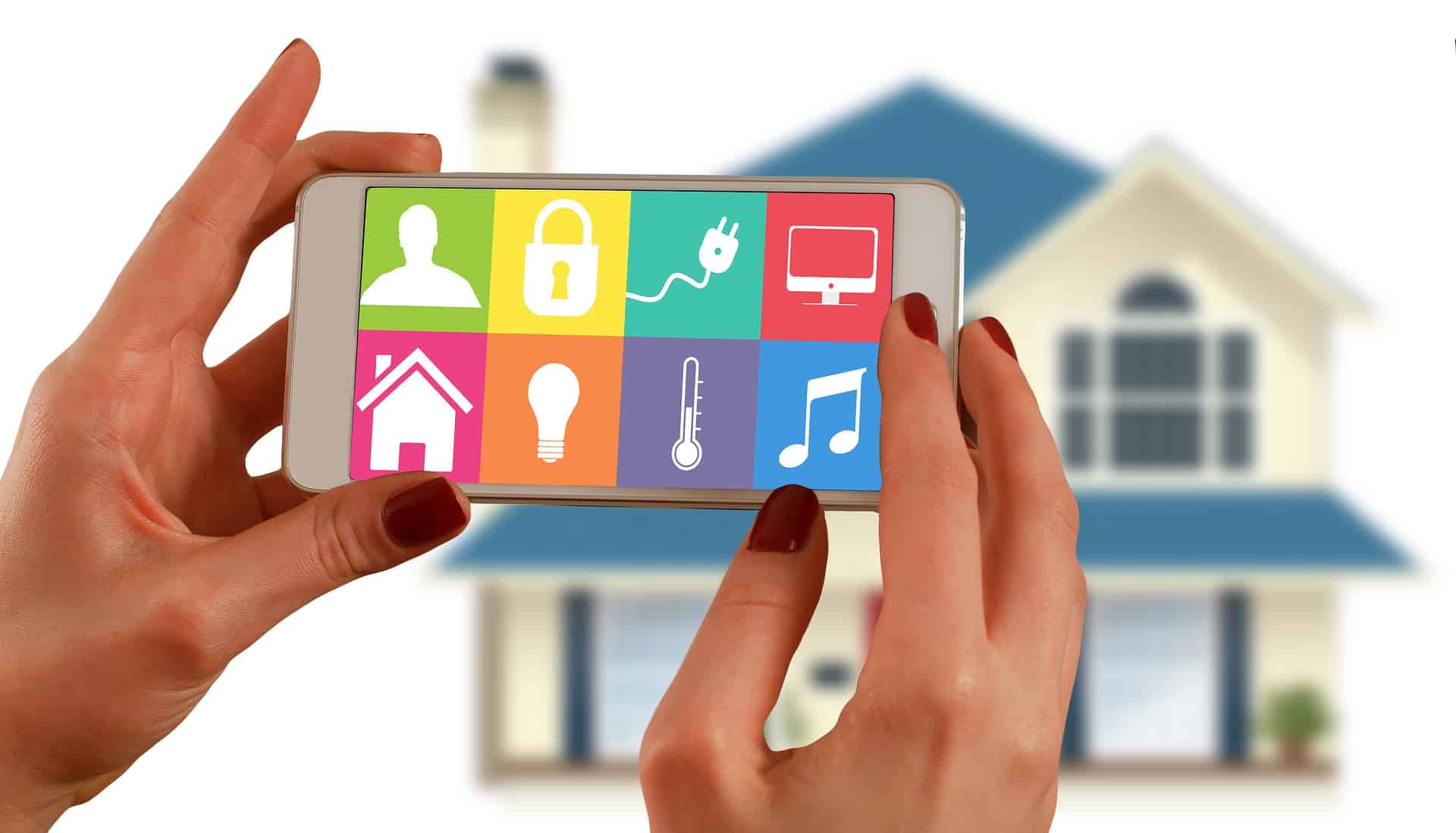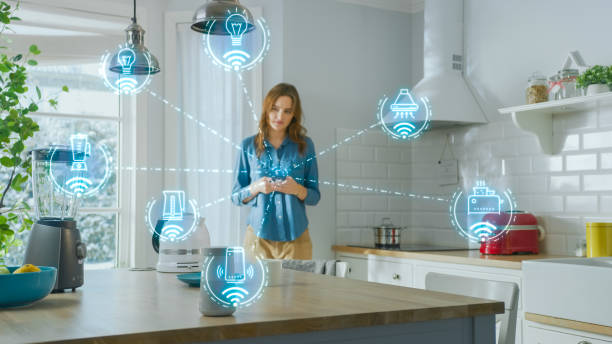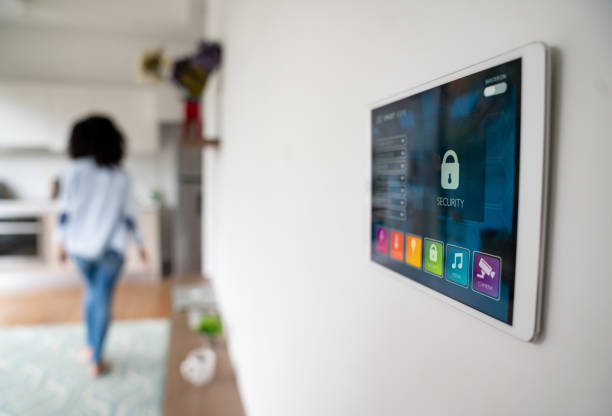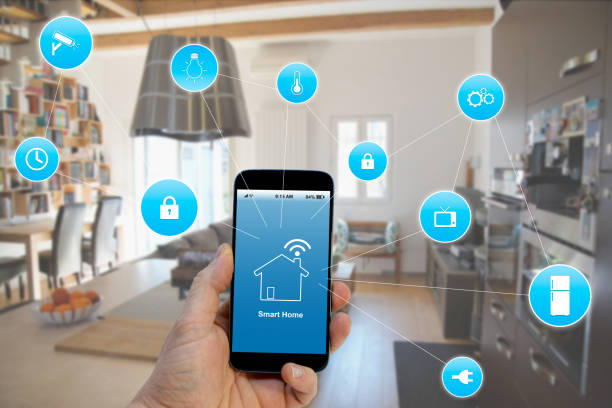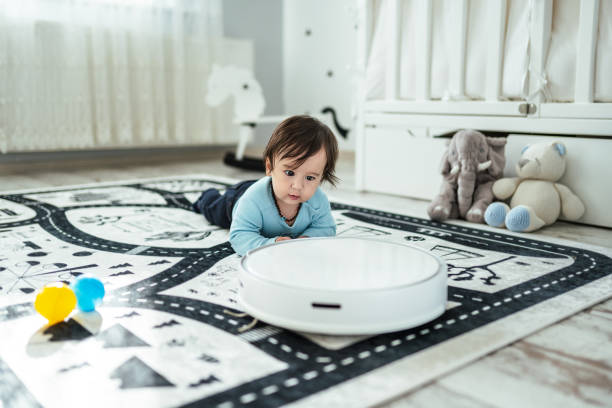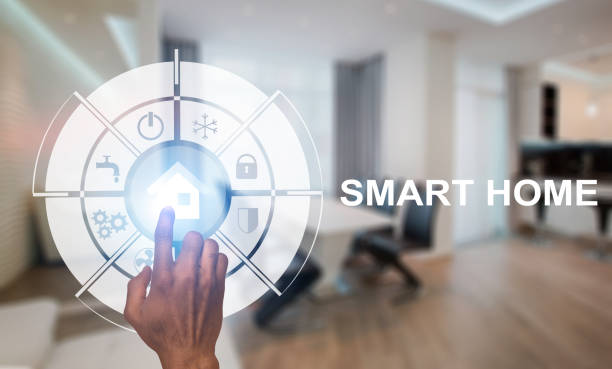Smart homes, by description, are homes that let the owners and inhabitants control them remotely through connected devices. These devices can communicate with each other using Internet of Things (IoT) technology. In some instances, they think and act for themselves using artificial intelligence (AI).
The devices in these smart homes can also be programmed to adhere to the rules of the owner, through wireless and wired connections. Based on a 2017 Gartner Survey on these solutions, Smart home was described as:
“Smart Homes consist of a set of devices and services that are connected to each other and to the internet and can automatically respond to pre-set rules, be remotely accessed and managed by mobile apps or a browser, and send alerts or messages to the user(s).”
These homes utilize IoT and AI devices including connected lights, sensors, and meters to collect and efficiently analyze data. The analyzed data is then used to make the home infrastructure efficient and make effective use of utilities to make the home more comfortable for the owner.
The technology also has its applications in different home safety, security, household appliances, and entertainment. Major industries have now begun integrating artificial intelligence with smart devices that enable connectivity among the devices.
Artificial intelligence includes the ability to connect many IoT devices, integrated with superior processing and learning abilities, and then using them to predict and pre-empt human behavior. AI-powered smart homes have devices that interact with one another and collect new data that helps in learning human habits.
The data collected is then used to predict the behavior of the users and then creates situational awareness. Thus, the devices in these smart homes understand all user preferences and change parameters accordingly.
AI Enhances Smart Homes’ Security Systems
The growing need to boost home security has resulted in the implementation of various AI-powered devices. These devices come with an assortment of features that include facial recognition, threat analysis, and smart home integration helping in safeguarding people from security threats.
AI-powered machines and devices easily recognize faces and objects due to their in-built pattern or face recognition feature. The technology checks facial landmarks, including the eyes, cheekbones, and chin, then compares them with existing data.
Additionally, the machines can send some notifications to the house owner’s mobile device about any visitors at their front door. Some of the most advanced home security cameras can easily identify the faces of friends, family members, and pets.
AI is also designed to help next-generation home security systems to monitor and seek any potential security threats. The systems are configured with some artificial intelligence logic functionality that has helped in the development of a customized suite of countermeasures to protect the entire house.
Artificial intelligence-powered cameras play an integral role in home security. These cameras can record HD videos and readily store them in the cloud for reference in the future. A homeowner can have a clear view of their house to safeguard from security threats using smart connected apps.
This technology is also used in smart locks that can be controlled using smart mobile devices. The AI-activated smart locks provide many security advantages, like temporary access to guests, limited reliance on physical keys for access, and extensive video streams of people ringing on the doorbell.
The biometric door locks can be integrated into Samsung, Google, and Amazon’s smart home networks for additional security.
Smoke Alarms Alert Users With The Help Of AI
Advanced smoke alarms that can think and alert the homeowner with the assistance of AI are now available in the market. Some of their smart features include offering notifications on mobile devices about low batteries. They also issue timely alerts in the case of carbon monoxide or smoke and they accurately pinpoint the location where there is a fire or smoke outbreak.
The smoke detectors may also be put on silent mode and other times they use voice alerts to notify the homeowner whenever they detect any small amount of smoke. This instant notification helps in timely and improved emergencies during emergencies.
Artificial Intelligence Helps In Daily Household Activities
Technology keeps advancing and AI is not an exception. It is designed to mimic the knowledge and learning abilities of people, all on a technological basis. Recent developments in the smart home automation networks have resulted in improved AI devices in terms of linking with the cloud, automating smart home devices based on user preferences, and learning human behavioral patterns.
Notably, LG developed DeepThinQ 1.0 technology supporting audio and video recognition and automatically transmits information to the cloud servers. Such devices automate different activities like switching off lights whenever the door is locked from outside and running some robotic vacuuming services when the owner is absent. They even turn the air purifier on before the owner comes home.
The AI washers study human habits and readily learn while applying the accumulated settings. They may also guide on how to dry different types of load. Washers and dryers communicate with the cloud and they adjust their operations according to the climate and air quality.
Air conditioners can determine the number of people in the room together with their identity. They can then keep the room temperature according to the occupants’ preferences. Samsung linked its SmartThings smart homes products with the Bixby voice control.
These products also recognize people in the house and adjust all settings to suit their needs. In the case of Samsung, the owner can control all these devices via its voice using a Samsung TV or family hub refrigerator.
SmartThings app can also enable the homeowner to download streaming apps and then sign in automatically. The cloud stores all login details of the users and provides convenient solutions to keep a backup of all data collected from the smart homes. Smart TVs display the people at the front door and work as hubs for other smart devices.
A Viarom Home provides a self-learning home controller that studies all habits of a person within 48 hours. It then creates a map for every room and controls the lighting and heating appliances. The controller has a well-designed firewall to protect smart homes against hackers.
MIT Creates An AI Smart Carpet To Monitor People Without Cameras
Carpeting and flooring trends seem to shift and change with every new technology that comes with styling and functional innovation. Many advanced carpets exist with the most notable being the AI smart carpet that was created by MIT.
Researchers and experts at MIT’s Computer Science and Artificial Intelligence Laboratory (CSAIL) have recently come up with a way to enable carpets to monitor people without having to use privacy-invading cameras. These intelligent carpets may have applications in gaming, smart homes, and customized healthcare.
Also, the smart carpets offer a privacy-friendly way of delivering healthcare to individuals who have to be monitored remotely by healthcare professionals.
According to MIT CSAIL, other research in this space relied extensively on devices like wearable webcams and cameras. The MIT ecosystem is designed to only use cameras for creating a dataset that was used in training the AI model. Interestingly, the neural network uses sensors in the carpet to determine whether an individual is doing sit-ups, stretching, or engaging in other physical activities.
One lead author on a paper about the carpet, Yiyue Luo, said:
“You can imagine leveraging this model to enable a seamless health monitoring system for high-risk individuals, for fall detection, rehab monitoring, mobility, and more.”
MIT’s primary focus is on 3D human pose estimation that utilizes pressure maps recorded by a tactile-sensing carpet. The researchers noted in a new paper:
“We build a low-cost, high-density, large-scale intelligent carpet, which enables the real-time recordings of human-floor tactile interactions in a seamless manner.”
The intelligent carpet used in this research measured 36 square feet and featured an integrated tactile sensing array comprising more than 9,000 pressure sensors that can be fixed on the floor. It also featured readout circuits to support real-time recordings of humans that interact with this smart carpet.
They called more than 1.8 million synchronized tactile and visual frames for up to 10 people performing various activities including walking, lying, and exercising. Sensors installed on the carpet change the person’s pressure into an electrical signal, via the physical contact between people’s limbs, feet, torso, and the carpet, based on reports by MIT CSAIL.
The experts involved in this process trained the system using tactile and visual data, like a video and corresponding heatmaps of anyone doing a pushup in their smart homes. The AI system uses the visual data as the actual truth and integrates it with the person’s pressure on the carpet to come up with different 3D poses.
Eventually, it produces an image or video of the homeowner doing various actions on the carpet without needing to record the person who is carrying out this action. Yunzhu Li, one of the paper’s authors, mentioned:
“You may envision using the carpet for workout purposes. Based solely on tactile information, it can recognize the activity, count the number of reps, and calculate the amount of burned calories.”
The Future Of Artificial Intelligence In Smart Homes
Residential households are continuously becoming smart with experts saying that technology will be used in over 300 million homes by 2023. With the continuous expansion of the smart homes market, new security threats are also on the rise.
Many wirelessly connected devices become more vulnerable to cyber-attacks. Thus, securing connected devices from various security threats and vulnerabilities is critical to boosting the trust of homeowners. When the owners trust the technology, they will acquire more devices.
For instance, in 2016, the Mirai IoT botnet took over many smart home devices, like routers, security cameras, and air quality monitors. That incident affected nearly 600,000 devices globally, resulting in redirecting huge amounts of web traffic and suspending services for sites like Netflix and Twitter.
On the flip side, firms are trying to link artificial intelligence with emotions with LG incorporating a cheerful personality while Sony added a unique personality to their next-generation devices. Personal assistants now have up to 12 emotions including pain, pleasure, satisfaction, and frustration among others.
The Emotion Processing unit can control facial expressions and body language of robots and avatars on a desktop screen.
Google included multilingual support to enable Google Assistant to understand and speak multiple languages simultaneously. That development helped the Assistant understand the languages of members in bilingual homes. The advancements in speech recognition enabled people to speak two languages interchangeably with the Assistant seamlessly.
For artificial intelligence to be ubiquitous in smart homes, the current-generation systems need to operate optimally and efficiently without any human intervention.
